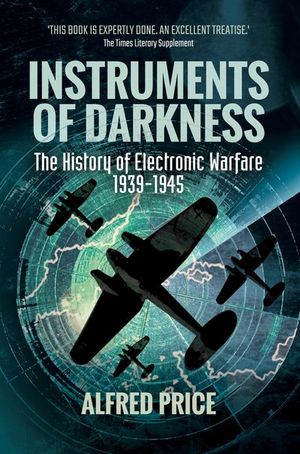Instruments of Darkness
The rapid evolution of radio and radar systems for military use during the Second World War, and devices to counter them, led to a technological battle that neither the Axis nor the Allied powers could afford to lose. The result was a continual series of thrusts, parries and counter-thrusts, as first one side then the other sought to wrest the initiative in the struggle to control the ether. This was a battle fought with strange-sounding weapons: 'Freya', 'Mandrel', 'Boozer' and 'Window'; and was characterised by the bravery, self-sacrifice and skill of those who took part in it. However, for many years the use of electronic-warfare systems during the conflict remained a closely guarded military secret. When that veil of secrecy was finally lifted, the technicalities of the subject meant that it remained beyond the reach of lay researchers and readers. Alfred Price, an aircrew officer with the RAF where he flew with V-Force and specialised in electronic warfare and air fighting tactics, was in the unique position to lift the lid on this largely unexplored aspect of the Second World War. When it was first published in 1967, Instruments of Darkness came to be regarded as a standard reference work on this intriguing subject. This completely revised edition concludes with the Japanese surrender in August 1945 and brings the analysis fully up to date in the light of what we now know. 'This book is expertly done. An excellent treatise.' The Times Literary Supplement
BUY NOW FROM
COMMUNITY REVIEWS

